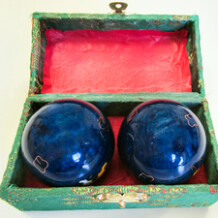Basic Concepts In Traditional Chinese Medicine
|

|
As you embark your treatment using Traditional Chinese Medicine (TCM) and experience its powerful healing ability, we thought you might be interested in knowing some basic concepts in TCM to better understand how your TCM treatment works.
If you have not tried TCM before, here’s what to expect. And if you have questions about how effective TCM is in treating ailments, then you should read our discussion on the evidence of TCM’s effectiveness.
Basic TCM concepts
The following are some basic TCM concepts that can help you better understand how your Traditional Chinese Medicine treatment works.
Some of the major functional entities featured in Traditional Chinese Medicine include Qi (气), “Blood” (血), the “Wu Zang” (五脏), the “Liu Fu” (六腑), and the meridians (经络).
TCM practitioners believe that the body is energized and kept alive by Qi (气), or essential life energy, which circulates in the body through invisible channels known as meridians (经络). [1]
Having the functions of energizing, warming, defending, transforming and containing [1], Qi is needed for the proper functioning of organs in the body and the production of essential bodily substances like “Blood” (血). In turn, “Blood” then serves the function of nourishing the body, and is required for the production of Qi. In this way, Qi and “Blood” are very much closely linked.
TCM practitioners also believe that the functions of the body are carried out by “internal organs” known as the “Wu Zang” (五脏), and the “Liu Fu” (六腑). The “Wu Zang” comprises the “Heart” (心), the “Lung” (肺), the “Spleen” (脾), the “Liver” (肝), and the “Kidney” (肾). The “Liu Fu” comprises the “Small Intestine” (小肠), the “Large Intestine” (大肠), the “Stomach” (胃), the “Gall Bladder” (胆), the “Bladder” (膀胱) and the “San Jiao” (三焦). [2]
In turn, the 5 “Zang” organs are considered to be mainly responsible for the production, storage and regulation of bodily substances such as Qi, “Blood” and body fluids. The 6 “Fu” organs are mainly responsible for the digestion of food, absorption and transportation of nutrients, and the excretion of waste. [2]
According to the principles of Traditional Chinese Medicine, the body is healthy when there is balance at every part of the body, and when Qi and “Blood” flow freely in the body. In turn, there is balance when the relative strength of Yin and Yang in every part of the body is equal.
The terms “Yin” and “Yang” are used by the Chinese to refer to opposing forces in nature, as well as opposing conditions of the body. “Yin” is used to refer to the colder, wetter, lesser, weaker, lower, more restful, darker, the more tangible, etc; “Yang” is used to refer to the hotter, dryer, greater, stronger, higher, more active, brighter, the more functional, etc. [3]
“Yin” and “Yang” are not forces or substances per se, but rather they represent a way of perceiving the world in terms of the interaction between polar opposites. The use of these terms are guided by a basic Chinese concept that opposites are interdependent – much as cold cannot be understood or defined without first experiencing heat, Yin cannot exist without its opposite Yang, and vic versa. [1, 3]
According to this viewpoint, all movement, growth and change in the body (and the world) are a manifestation of shifts toward or away from “Yin” or “Yang”, or both. Although seemingly in opposition, “Yin” and “Yang” are actually perceived in TCM to complement and support each other. [3]
When external forces (e.g. weather changes) or internal forces (e.g. emotions) upset the harmony and balance in the body, illnesses result [3].
|
Follow this site
|




















Recent Comments